Papaya is a fast-growing, short-lived, semi-woody, herbaceous tree and a very important commercial plant that produces fruits grown extensively in developing countries for consumption. However, it is becoming an important international fruit, both as fresh fruit and for processed products.
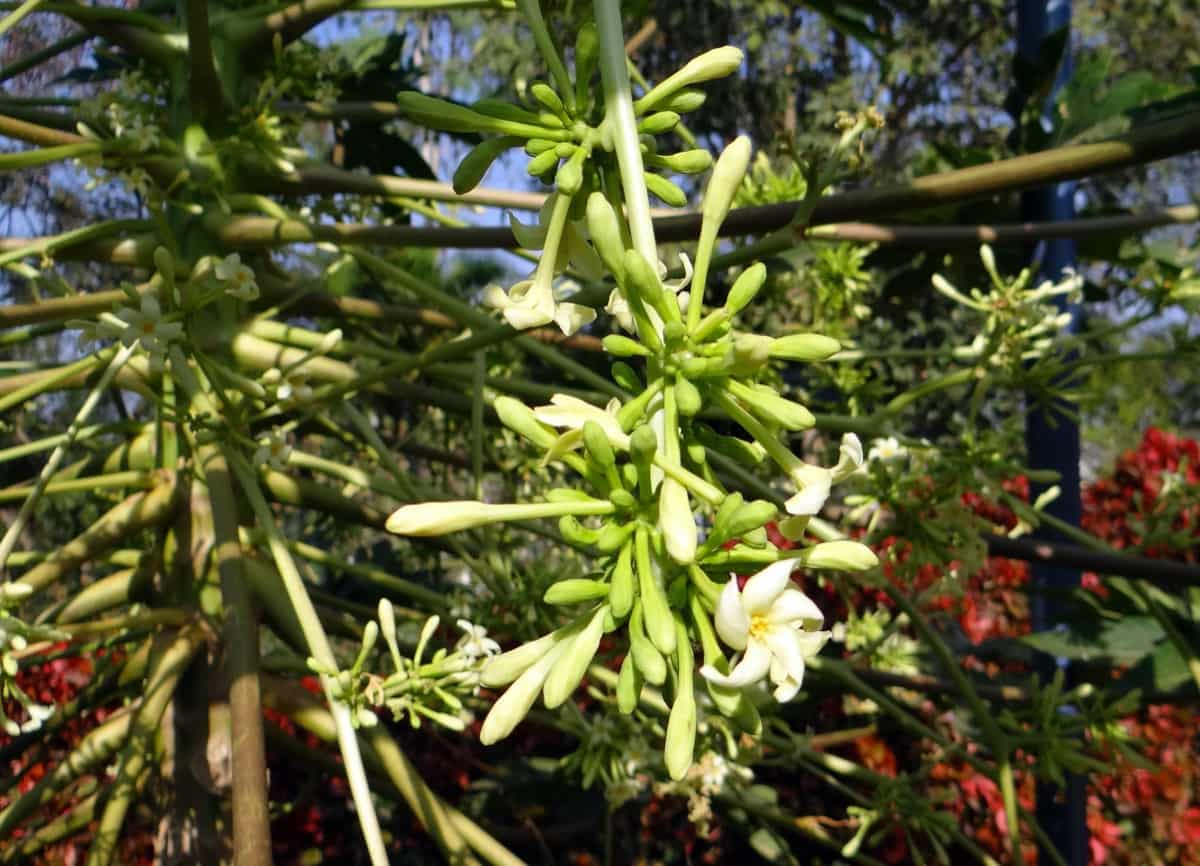
Papaya is the third most cultivated fruit in the world, next to mango and pineapple, respectively, occupying 15.36% of total tropical fruit production worldwide. Despite its sweetness, the fruit is low in calories, potassium, and vitamin A. Red Lady, Maradol, and various Solo varieties are India’s most common papaya varieties.
Red Lady Taiwan Papaya farming in India
Characteristics of Red Lady Papaya
As an early and productive papaya, ‘Red Lady’ makes an excellent crop. It is a dwarf self-pollinating variety of Papaya that is particularly resistant to the Papaya ring spot virus. After reaching a height of 4 feet in its second year, the dwarf tree will begin to flower and produce fruit during its second year. Growing it in high light with an extended growing season can make it fruit the first year if it is grown in high light.
Self-fertile hybrids like Red Lady produce 1.5 kg and 2.5 kg of fruits. For plants grown in containers, 1.5 kg of fruits is more likely to be produced. A Papaya is an oblong fruit that is orange-red, sweet, and juicy when ripe. Aside from being rich in vitamins A and C and other nutrients, this fruit also have papain, an enzyme that helps the body digest proteins. Therefore, the fruit should be harvested when the skin changes from green to yellow. Papayas are sometimes shredded and used as a part of salads and stews.
| Commodity | Papayas |
| Category | Tropical Fruit |
| Appearance | A large, oblong fruit that ripens from green to bright yellow |
| Flesh | Vibrant salmon-colored flesh |
| Flavor | Melon-like flavor with a sweet aroma |
| Size | About 1.5 to 2.5 kg |
| Color | Green, ripening to yellow |
| Shape | Oblong |
| Served Raw | Yes |
| Seed | An inner cavity filled with small, round black seeds |
| Availability | Year-round |
In case you missed it: How this Farmer Earning 30 Lakhs from Papaya Cultivation in 6 Acres: An Indian Farmer Success Story
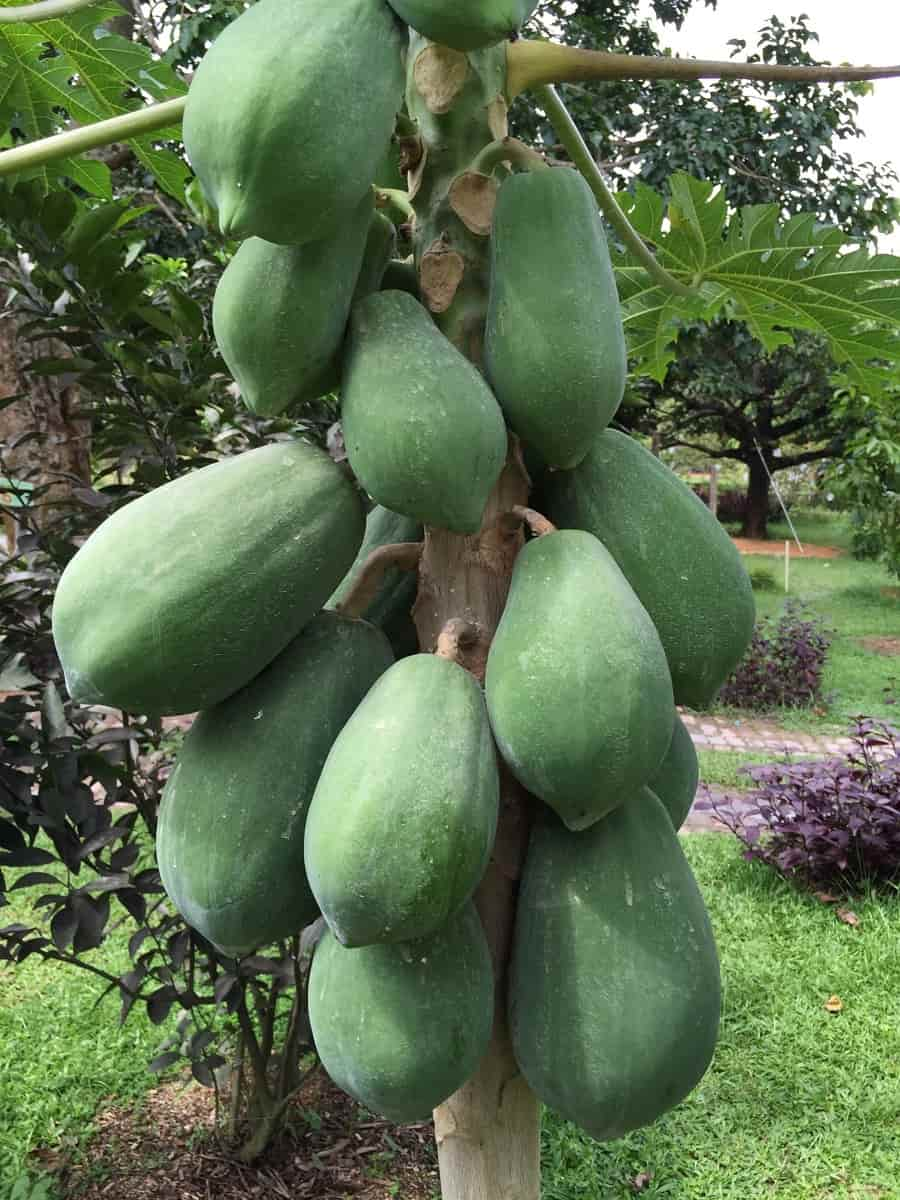
Red Lady Taiwan Papaya cultivation in India
India is one of the world’s largest papaya producers. According to recent estimates, approximately 3,20,000 acres and 5,160390 metric tons of Papaya are grown in India. Farmers earn more profit through farming 786 Taiwan red lady hybrid Papaya. In several states of India, namely Andhra Pradesh, Tamilnadu, Bihar, Asam, Maharastra, Gujrat, Uttar Pradesh, Madhya Pradesh, and Karnataka, the pie of this crop increases.
The yield of Red Lady Taiwan Papaya
Red Lady, the high-yielding Papaya, is the most favored variety by farmers for large-scale commercial production as it is more resistant to infestation. Variety red lady Taiwan has a duration of about two years. During a two-year productive life cycle, this plant will become aggressive, high-yielding, and capable of producing 50 tons per acre. There may be 50 to 120 fruits produced by one tree with an average weight of 1.5 to 2 kilograms per fruit.
The semi-dwarf begins to bear fruit at 50 to 80 cm in height, depending on the variety. The quality of the fruit is excellent, being thick, firm, red in color, aromatic, and very sweet, with a sugar content of 13-14%. A female plant produces short, oblong fruits, while a bisexual or hermaphrodite plant produces long, round fruits. It is highly resistant to the papaya ring spot virus. From the time they are sown, they are ready to be harvested between 8 and 9 months later.
Propagation of Red Lady Papaya plants
The papaya plant is propagated from seeds. Various sources are available for seeds, especially 8-9 months before the monsoon season begins. When collected from fruit pods, it is important to select papaya seeds carefully. The fruit must be large, and the mother plant should be pests and disease free to produce large fruit. In addition, it is also important for the fruit and plant to be healthy.
It is common for a pod to contain a male and a female plant.It is more likely that you will get lesser male plants if you select seeds from the head area of the tree where the fruit is attached. When choosing, it is important to discard all the light and dark black seeds. Ensure that the fruit is ripe before you collect the seeds, and let them dry for three days in the shade after they are collected.
Sarcotesta (the gel layer around the seed) can wrinkle over time. You should pick all seeds that look the same size and weigh the same after 72 hours. It is just a rough estimate. By doing this, you will be able to avoid all the seeds that have shrunk to a smaller size than most. As a final step, the seeds are ready for planting, and for germination, you can use a germination tray with coco peat to facilitate germination.
In case you missed it: Taiwan Guava Farming, Planting, Harvesting, Yield, Profit
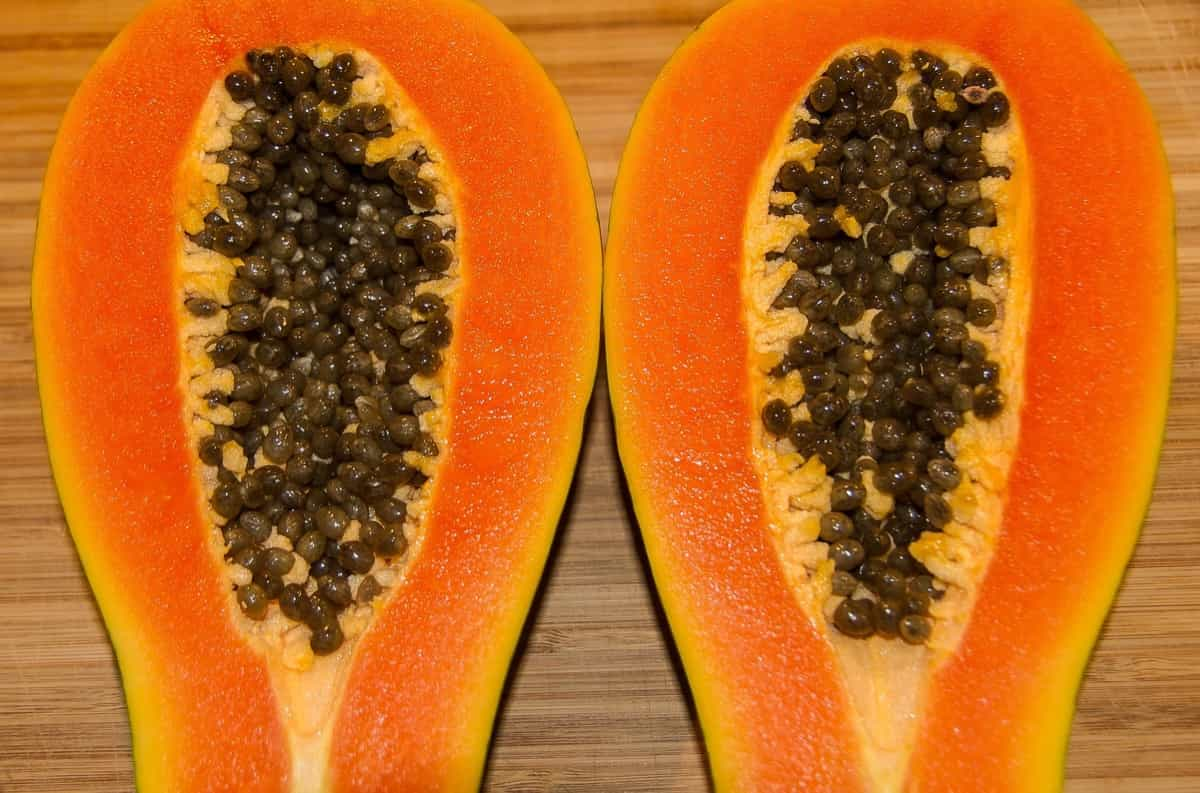
The tray should be kept in a shaded, warm, and moist area, so it does not dry out. Ensure that you water the seeds twice daily and that the tray is always moist. It usually takes two weeks for the seeds to germinate once they have been planted. You must remove all the leggy plants and other plants that look too weak once the plants are nearly three inches tall. As a result, around 15% of all germinated plants will be discarded, and only healthy plants will be transplanted.
Seed rate for Red Lady Papaya cultivation
A seed rate of 100 to 120 grams per acre is recommended. A nursery bed 3m long, 1m wide, and 10 cm high is suitable for raising the seedlings, and you can also raise the seedlings in pots or polythene bags, depending on the bed size. In addition to being treated with 0.1% Monosan (phenyl mercuric acetate), ceresan, etc., the seeds are sown at a depth of 1 cm in rows 10 cm apart, covered with fine compost or leaf mold, and then germinated.
Land Preparation Spacing and Pruning for Papaya plantation
Land used to cultivate papayas should be well protected from strong winds and not become waterlogged easily during the rainy season. If there are strong winds in the area, there must be windbreaks around the land to protect it from the wind in these circumstances. As soon as the seeds have been sown in seed beds, they will be transplanted to the main field about 6-8 weeks after being grown for the first time.
The papaya plant should be planted in full sun and at a distance of at least seven to ten feet from other plants, buildings, and power lines. The normal course will follow a spacing of 1.8 x 1.8 m. However, the best way to increase the returns to the farmer is to cultivate at a higher density with a spacing of 1.5 x 1.5 meters to enhance the yields. As a result of this spacing, at least one of them will be fruitful, and it will also be easier to fertilize and water them.
Replanting Papaya Saplingss
The papaya plant will need to be moved into a grow bag once it germinates and is 3 inches tall. It improves root growth and accelerates plant growth. As the Sapling will be weak at this stage, planting it in the ground is not recommended. The plant should be kept in a grow bag for up to 2 months until it reaches a height of 10 to 12 centimeters. When your papaya sapling reaches around 10 centimeters in height, it’s time to replant it.
Papaya crop care
To grow papayas successfully, you will need a frost-free climate, a lot of sunlight, water, and good soil. When you give your plant all these conditions, you can grow Papaya from seed and usually have fruit 6 to 12 months after starting your plant. Therefore, the best time to plant papaya saplings is between November and January.
As a result, this is the perfect time to plant papayas. On the other hand, the saplings will have to grow well by the end of the monsoon season. Therefore, it is recommended that the saplings get ample sunlight, and the soil should not be too wet, especially during the monsoon season when excess moisture could lead to root decay.
Soil types and PH value for Red lady Papaya plantation
It is possible to grow Papaya in a variety of soil types. Papaya plantations, however, require a rich, sandy loam, ideal for planting papayas. It can also grow well on alluvial soil along the banks of rivers and deltas. As a result, it cannot grow in shallow soils or soils that do not allow water to drain away easily. Consequently, the best soil to cultivate Papaya is fertile, lime-free, and well-drained. It can also thrive on alluvial and medium black soil, which are both good for its cultivation. A soil pH value of between 6.5 and 7.5 is recommended for the proper growth of plants.
Irrigation requirement for Red lady Papaya
The optimum soil moisture is maintained through the crop’s judicious irrigation to ensure the crop’s best growth, production, and quality. The interval between irrigations is determined by the season, the growth of the crop, and the type of soil. A tree root should not be allowed to stagnate in still water, as this will cause the roots and stems of the tree to rot. Therefore, the use of a drip irrigation system is beneficial, and the amount of water given to each plant daily should also be carefully calculated.
In case you missed it: A Step-By-Step Guide to High Density Fruit Farming: For Guava, Banana, Mango, Pineapple, Lemon, Papaya, Litchi, and Apple
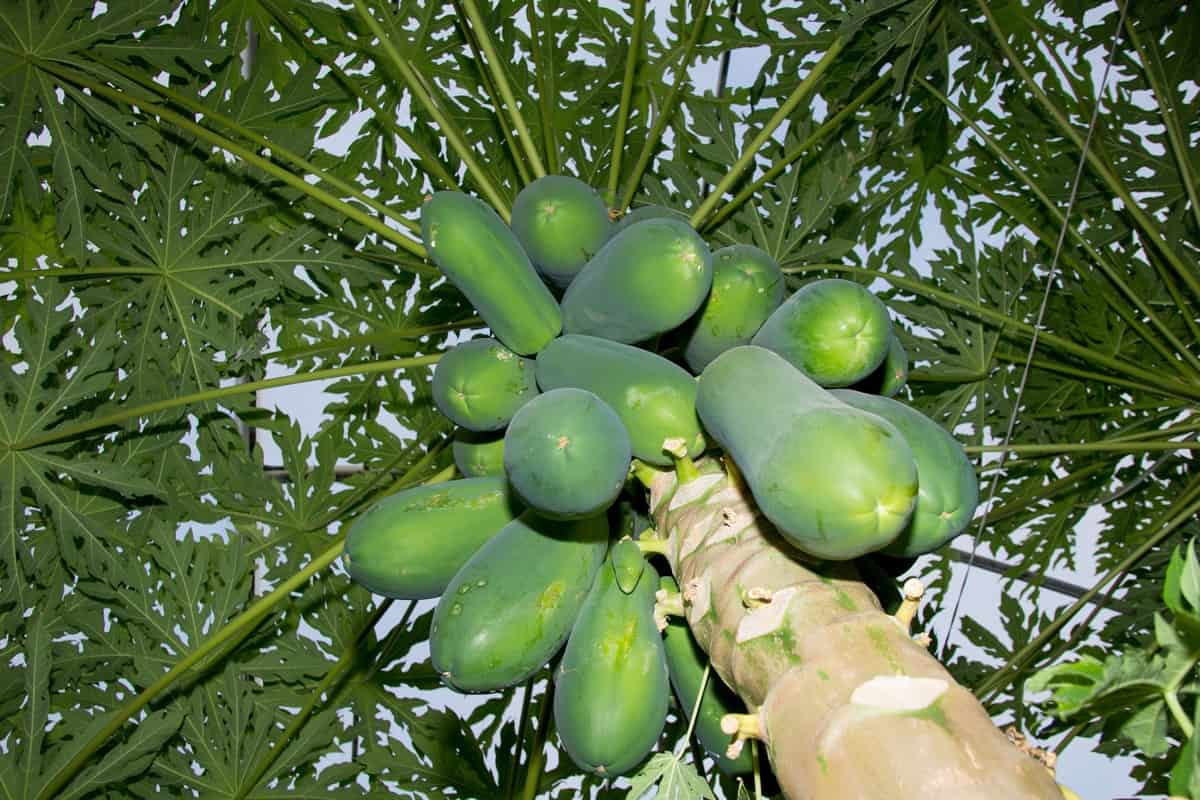
Climate for Red lady Papaya farming
Papaya is mainly tropical fruit. But in areas with sub-tropical climates where there is no fear of frost, Papaya can be cultivated. The optimum temperature for Papaya farming is 22-26°C but should not be less than 10°C. Papaya can also be grown well in places with temperatures ranging from 38°C to 43°C in the summer season.
Extreme cold and frost are Papaya’s enemies as they negatively affect the plant and the fruit. Therefore, for the successful production of Papaya, comparatively high temperature, low humidity, and sufficient moisture are required.
Fertilizer application in Red Lady Taiwan Papaya crop
The best way to ensure that papaya growth and fruit production continue is to apply fertilizer regularly in small amounts. It is recommended that young trees are fertilized every 14 days with 120 grams of a complete fertilizer, increasing the amount as the trees become larger and more established. There are several components to complete fertilizers, which include nitrogen (N), phosphate (P2O5), potash (K2O), and magnesium (Mg). In addition, the trees should be fertilized with 450 to 900 grams of fertilizer every other month after reaching 7 to 8 months.
Minor elements may be applied up to 1 time per month. Minor elements, such as manganese and zinc, may be applied to the ground if the soil pH is seven or less, whereas foliar applications should be applied to plants growing in soils with a pH higher than 7 (>pH 7). In the same way, iron sulfate may also be applied to the ground for plants that grow in soils with low pH levels. For plants growing in soils with a high pH level, it is necessary to mix chelated iron with water and apply the solution as a soil drench.
Pruning practices applied in red lady Papaya farming
Plants such as Papaya do not require pruning since their main point of growth is terminal, and branches may not be able to produce as much as branched trees. However, side shoots can grow as papaya plants mature if exposed to environmental conditions that inhibit their growth or if the main growth point is damaged or killed by a disease or insect attack. For this reason, one or two of the most vigorous shoots should be selected, and the rest should be removed to facilitate their growth and fruiting.
Additionally, by tying these side shoots to a stake, there is a lesser chance that they will break off because of a heavy fruit load or high winds that may cause them to break off. As a final point, removing dead leaves from your plants early on is a good practice, as this will result in less damage to your plants from scarring on the fruit. Moreover, it reduces the problems associated with disease and insects as well.
Inter cultivation in Red lady Taiwan Papaya
Intercultural is mainly done to remove weeds during the early period of growth. Weeding and hoeing between rows also favor better aeration to the root zone. Some pre-emerging weed killers like Basalin may be used to kill weeds before they emerge. Roughing also removes extra plants, weak plants, and diseased plants.
The earthing up is done in a radius of 30 cm around each pit after ensuring one plant is in each pit. Special horticultural practices include planting 3 to 4 seedlings at one pit, removing extra plants, and keeping one per pit. While doing so, 10 percent of male plants are kept in the female plant population to pollinate and improve the fruit set.
Common pests and diseases occurring in Red Lady Taiwan Papaya farming
Common pests
Spider Mites, Whitefly, aphids, and Mealybug are common problems in Papaya Plants. Pests can be controlled by maintaining healthy hygiene for plants. Keeping the surface soil dry and avoiding water logging will prevent Nematodes. Avoiding intercropping and removing plants that attract spider mites and fruit flies will prevent pests from affecting the Papaya plantation. Ensure that the fruits are not allowed to ripen on the Papaya plant and that fruits that fall are removed daily.
In case you missed it: How to Grow Papaya from Seeds at Home: In Containers, Indoors, Backyard, and On the Terrace
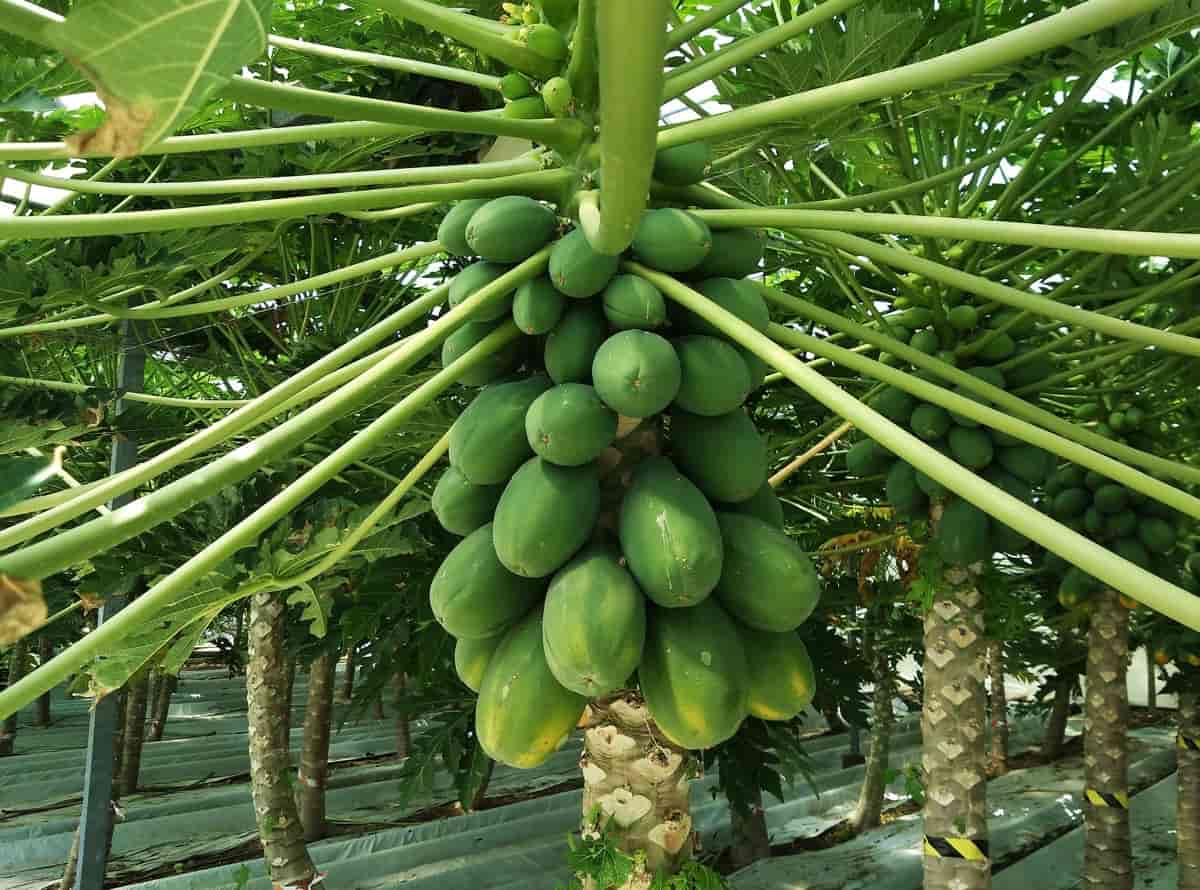
| Pest | Symptoms | Pesticide |
| Spider Mites | Leaves will completely desiccate and drop off. Also, produce webbing on the leaf surfaces. | Phosphamidon: 0.05% Methyl Parathion: 0.04% |
| Whitefly | The leaves turn yellow and drop off.Plants’ photosynthetic efficiency is negatively affected by the growth of sooty mold on their leaf surfaces. | Diafenthiuron 50% WP 240 gm per acreAcetamiprid 40 gm per acre |
| Mealybugs | Affected body portions will become chloritic, turning brown and eventually drying up.Due to honeydew excretion infested portion becomes shiny and moist, and to this, secondary infection by the sooty fungus | Thiomethaxom at 0.5 gram/liter waterDimethoate at 2 grams/liter water |
Common diseases
| Pest | Symptoms | Pesticide |
| Powdery Mildew | Darkened leaves will later turn to powdery white spots, covering the entire leaf.Small malformed fruits and distorted leaves are all symptoms of powdery mildew | 30 grams Sulphur in 10 Litres of water spraySpray 5ml Calixin 75 EC in 10 Litres of water every 15 days |
| Leaf blight | small discolored lesions irregularly scattered on leaves. They turn brown to gray, resulting in a considerable reduction in yield | Spray Dithane M45 .2% starting from the appearance of symptoms |
| Damping Off | It usually affects young seedlings. Lesion of Stem Just above soil level.It causes the seed to rot before it can germinate, or, in seedlings, it attacks the roots, and wilting will occur. | Treatment with Carbendazim + Mancozeb, Copper oxychloride, and Metalaxyl + Mancozeb effectively control damping off |
| Anthracnose | The spots on fruits first appear as superficial brown skin discoloration, which develops into circular.Infection at the early stages of fruit will result in mummification and deformation. | The application of a 1% sodium bicarbonate solution satisfactorily controlled the development of Anthracnose in Papaya |
Ripen stage identification and harvesting Red lady Taiwan Papaya
In any stage of its ripeness, red lady papaya can be harvested from a slightly yellow stage to a fully yellow stage, depending on how ripe it is. The fruit of the partially yellow Papaya ripens fully in a few days at room temperature. However, the fruit that is allowed to ripen on the tree will have a much greater sweetness and juiciness than the fruit that is allowed to ripen on a tree.
In case you missed it: Top 20 Steps to Boost Papaya Yield: How to Increase Fruit Size, and Production
It is also possible to identify ripe, sweet red lady papayas by their yellow skin. The papayas grown commercially are harvested when the fruit turns yellow from green. When the fruit has ripened at room temperature, it becomes soft and full of yellow or yellow-orange color within a few days of the fruit beginning to ripen.
Conclusion
There is a lot of profit to be made in papaya cultivation in India, which is a relatively safe and profitable business. Papaya is used as a vegetable and can also be cultivated for its fruit, latex, and dry leaves. Due to the high yielding capacity and the good keeping quality of the fruit, farmers are increasingly turning to Red Lady Taiwan Papaya variety over other varieties of papayas nowadays.
- Types of Pesticides Used in Agriculture: A Beginner’s Guide
- Economical Aquaculture: A Guide to Low-Budget Fish Farming
- 15 Common Planting Errors That Can Doom Your Fruit Trees
- How to Make Houseplants Bushy: Effective Tips and Ideas
- Innovative Strategies for Boosting Coconut Pollination and Yield
- Pollination Strategies for Maximum Pumpkin Yield
- The Complete Guide to Chicken Fattening: Strategies for Maximum Growth
- Natural Solutions for Tulip Problems: 100% Effective Remedies for Leaf and Bulb-Related Issues
- Revolutionizing Citrus Preservation: Towards a Healthier, Greener Future
- Natural Solutions for Peony Leaf and Flower Problems: 100% Effective Remedies
- Maximizing Profits with Avocado Contract Farming in India: A Comprehensive Guide
- Natural Solutions for Hydrangea Problems: 100% Effective Remedies for Leaf and Flowers
- The Ultimate Guide to Choosing the Perfect Foliage Friend: Bringing Life Indoors
- From Sunlight to Sustainability: 15 Ways to Use Solar Technology in Agriculture
- The Ultimate Guide to Dong Tao Chicken: Exploring from History to Raising
- The Eco-Friendly Makeover: How to Convert Your Unused Swimming Pool into a Fish Pond
- Mastering the Art of Delaware Chicken Farming: Essentials for Healthy Backyard Flocks
- 20 Best Homemade Fertilizers for Money Plant: DIY Recipes and Application Methods
- How to Craft a Comprehensive Free-Range Chicken Farming Business Plan
- Brighten Your Flock: Raising Easter Egger Chickens for Beauty and Bounty
- How to Optimize Your Poultry Egg Farm Business Plan with These Strategies
- Subsidy for Spirulina Cultivation: How Indian Government Schemes Encouraging Spirulina Farmers
- Ultimate Guide to Raising Dominique Chickens: Breeding, Feeding, Egg-Production, and Care
- Mastering the Art of Raising Jersey Giant Chickens: Care, Feeding, and More
- Ultimate Guide to Raising Legbar Chickens: Breeding, Farming Practices, Diet, Egg-Production
- How to Raise Welsummer Chickens: A Comprehensive Guide for Beginners
- How to Protect Indoor Plants in Winter: A Comprehensive Guide
- Ultimate Guide to Grow Bag Gardening: Tips, Tricks, and Planting Ideas for Urban Gardeners
- Guide to Lotus Cultivation: How to Propagate, Plant, Grow, Care, Cost, and Profit
- Agriculture Drone Subsidy Scheme: Government Kisan Subsidy, License, and How to Apply Online
- Ultimate Guide to Raising Araucana Chickens: Breed Profile, Farming Economics, Diet, and Care
- Bringing Hydroponics to Classroom: Importance, Benefits of Learning for School Students
- Ultimate Guide to Raising Polish Chickens: Breed Profile, Farming Economics, Diet, and Care
- Ultimate Guide to Raising Australorp Chickens: Profile, Farming Economics, Egg Production, Diet, and Care
- Silkie Chicken Farming: Raising Practices, Varieties, Egg Production, Diet, and Care
- Sussex Chicken Farming: Raising Practices, Varieties, Egg Production, Diet and Care
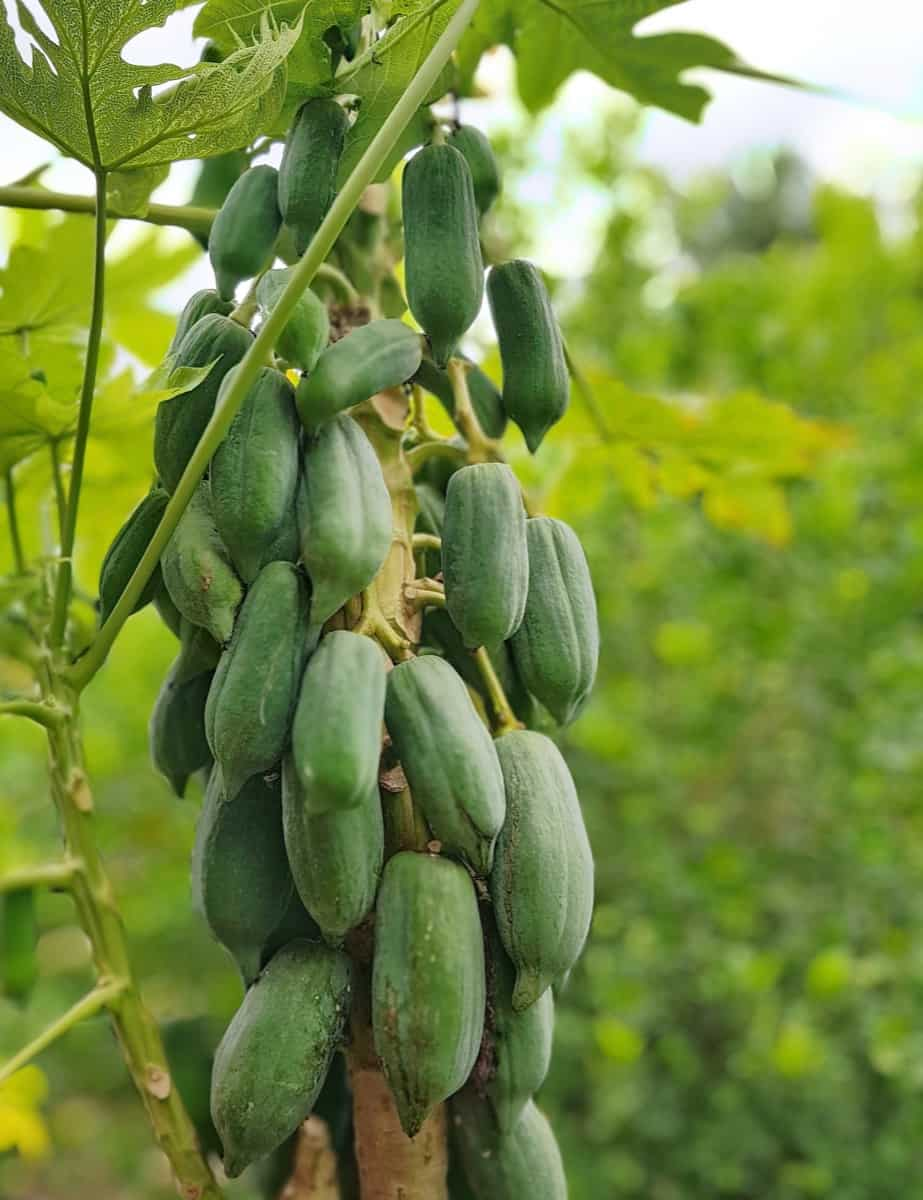
Need some seeds